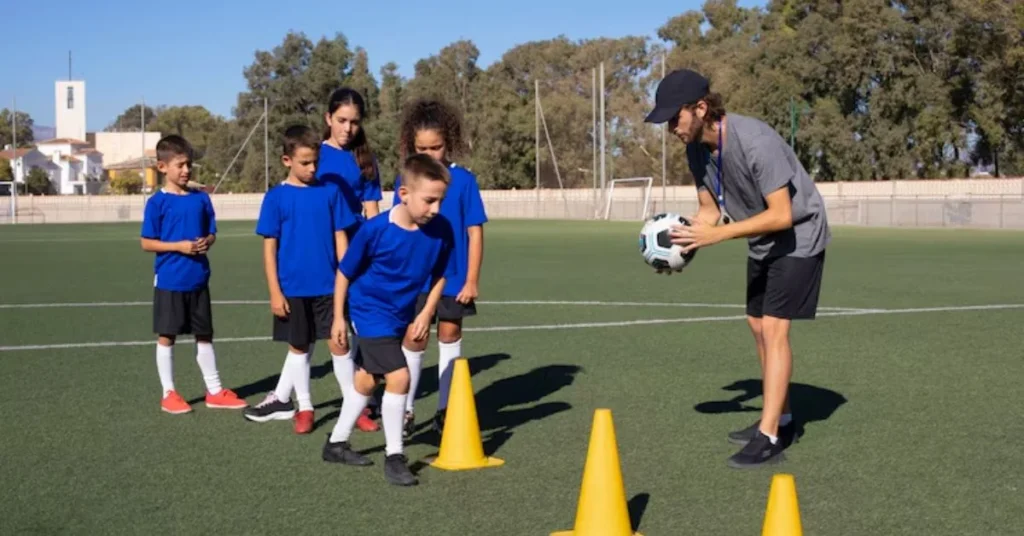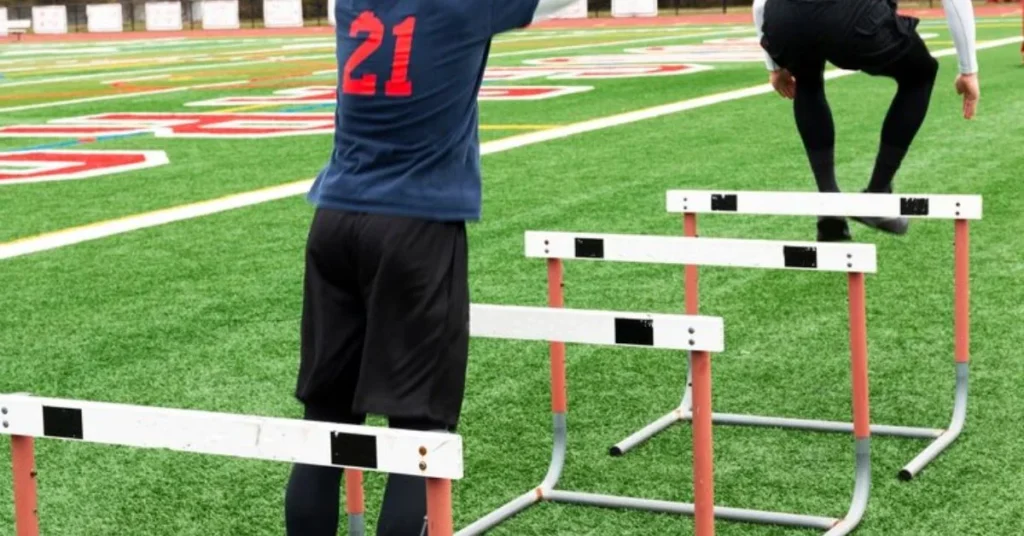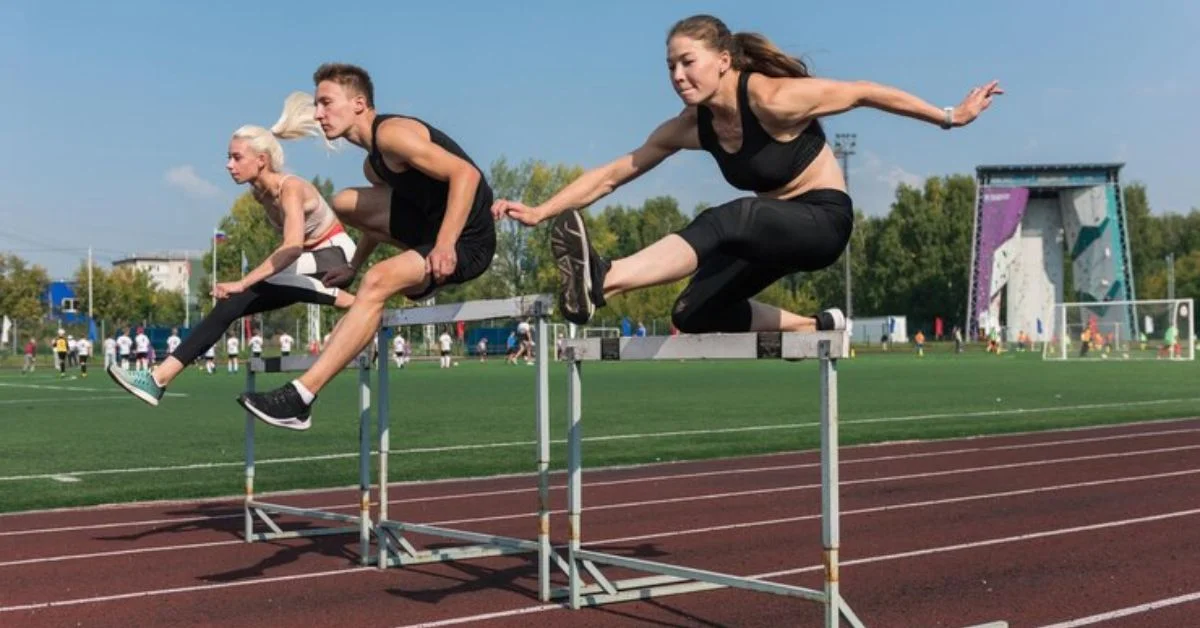Hurdle Techniques- Teaching hurdling requires more than only the ability to jump over obstacles; it also demands rhythm, skill, and accuracy. You have come to the correct spot if you have ever desired to know how to instruct hurdle skills with precision and ease. Athletes, coaches, and trainers will find this book to be an invaluable resource for laying a solid groundwork for future success on the field.
Understanding the Basics of Hurdling
Before diving into drills and technical nuances, it’s crucial to understand hurdling fundamentals.
- Objective: Clear hurdles efficiently while maintaining speed.
- Hurdle Events: 100m hurdles (women), 110m hurdles (men), and 400m hurdles.
- Skill Set Required: Speed, agility, strength, flexibility, and coordination.
Teaching athletes to view hurdles not as obstacles but as rhythm checkpoints is the first step in fostering confidence.
Key Components of Hurdling Techniques
Breaking down hurdling into components simplifies the learning process:
1. Start and Acceleration
- Emphasize explosive starts.
- Build momentum leading into the first hurdle.
2. Hurdle Clearance
- Lead Leg: Quick and direct over the hurdle.
- Trail Leg: Tucked and follows swiftly to minimize air time.
- Arm Action: Maintain sprinting form to support balance.
3. Landing and Recovery
- Land slightly ahead of the center of mass.
- Push off immediately into the next stride without hesitation.
| Component | Focus |
|---|---|
| Start | Explosive acceleration toward first hurdle |
| Clearance | Efficient lead and trail leg technique |
| Recovery | Quick resumption of sprinting rhythm |
Step-by-Step Approach: How to Teach Hurdle Techniques
Step 1: Assess the Athlete
- Evaluate flexibility, strength, and sprinting ability.
- Identify natural lead leg preference.
Step 2: Teach Basic Hurdle Drills
- Start with low hurdles.
- Focus on walking or jogging over hurdles to teach form before speed.
Step 3: Introduce Three-Step Drills
- The aim is three strides between hurdles, promoting speed and rhythm.
Step 4: Reinforce Arm Mechanics
- Arms should mirror sprinting action even during clearance.
Step 5: Progress to Full Speed
- Gradually increase speed while maintaining technique.
- Use video analysis for feedback.
Step 6: Race Simulation
- Set up practice races to build competitive instincts.

Essential Drills for Hurdle Training
Incorporating specific drills accelerates learning. Here are must-try drills:
1. Lead Leg Drills
- Focuses on snapping the lead leg back quickly after clearance.
2. Trail Leg Drills
- Teaches the trailing leg to drive forward in a tight, efficient arc.
3. Hurdle Mobility Drills
- Improves hip flexibility and clearance efficiency.
4. Rhythm Drills
- Set hurdles closer together to develop consistent steps and pace.
5. Quick Step Hurdles
- Promote fast turnover and minimal time above hurdles.
Common Mistakes and How to Correct Hurdle Techniques
Avoiding bad habits is key to effective coaching.
Mistake 1: Leaning Too Early
Correction: Teach proper body positioning with core-focused exercises.
Mistake 2: Over-rotating Arms
Correction: Incorporate sprint drills that emphasize tight, efficient arm movement.
Mistake 3: Excessive Vertical Jumping
Correction: Use lower hurdles to teach “running over” rather than “jumping over” hurdles.
Mistake 4: Poor Trail Leg Recovery
Correction: Drill the trail leg swing repeatedly using stationary hurdle drills.
Mistake 5: Losing Rhythm Between Hurdles
Correction: Set hurdles closer or further apart based on athlete needs to maintain three-step consistency.
Advanced Tips for Competitive Hurdlers
Once fundamentals are mastered, consider these advanced techniques:
- Develop Both Legs: Train athletes to hurdle with either leg for flexibility in races.
- Micro-Hurdles Training: Use mini-hurdles to sharpen quickness and foot placement.
- Strength Training: Incorporate weightlifting to build power for starts and hurdle drives.
- Mental Conditioning: Visualization and reaction time drills enhance focus during races.
Using Technology to Enhance Hurdle Training
Modern coaching embraces technology for optimal results.
- Video Analysis: Slow-motion reviews to critique form.
- Timing Systems: Measure sprint times between hurdles.
- Apps: Use training apps that track workouts and progress.
- Wearable Devices: Monitor biomechanics and fatigue levels during training.
Pro Tip: Video feedback is one of the fastest ways to correct technical errors because athletes can “see” the issue rather than rely solely on verbal instruction.

Conclusion: Hurdle Techniques
It takes time, research, and the correct training methods to become an expert hurdle technique instructor, but the payoff is well worth the effort. Athletes may reach their maximum hurdling potential with the support of their coaches, who can help them develop solid foundational skills while also using cutting-edge drills and technology.
Are you prepared to assist your athletes in confidently and swiftly overcoming obstacles? Their performance will skyrocket once you begin following these tactics immediately!
FAQs: Hurdle Techniques
1. What age should you start teaching hurdle techniques?
Children can start basic hurdle drills around age 8-10, focusing on flexibility and form before introducing competitive speed.
2. How many days per week should hurdlers train?
Typically, 3-4 focused training sessions per week are ideal, combined with general sprint and strength conditioning.
3. What are the best exercises to support hurdling?
Exercises that improve core strength, hip mobility, and explosive power — such as lunges, box jumps, and planks — are beneficial.
4. How important is flexibility in hurdling?
Extremely important. Proper hip, hamstring, and quad flexibility reduce injury risk and improve hurdle clearance efficiency.
5. Can you teach hurdling without hurdles?
Yes! Using cones, low barriers, and imitation drills, athletes can learn technique fundamentals before using actual hurdles.
For more information, click here.









